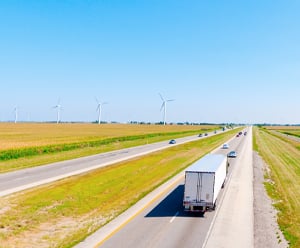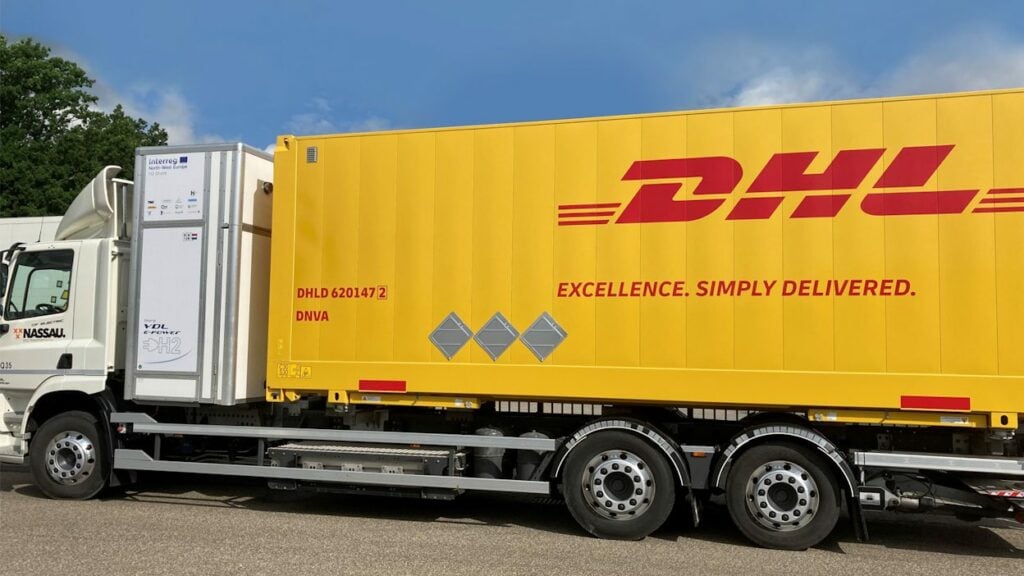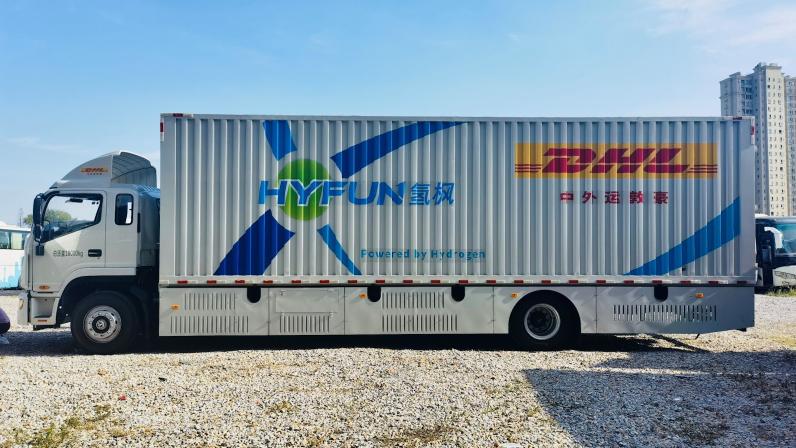
Alternative fuels: What does the future hold?

Will we pay at the pump or the plug?
Imagine you could hop in a car and zip through time like Marty McFly in the iconic American science fiction film Back to the Future. What year would you choose? And what would you discover once the gull-wing doors on your DeLorean rose and the dust cloud faded away? If you landed in Hill Valley, California, in 1955 as Marty did, you would find a charming town – with streets full of big, bulky, gas-guzzling cars and trucks.
But what if you traveled to 2015, as Marty did in Part 2? Well, you would find … streets full of big, bulky, gas-guzzling cars and trucks – not the flying cars running on banana peels and other trash depicted in the movie. But you would also find people working to make sustainable fuels a reality.
We are still far from flying cars, but automakers have made quantum leaps forward in the fuels and tech that make us mobile. Vehicles powered by fossil fuels will soon be a blast from the past. Alternative fuels that might have been considered out of this world a few decades ago are revolutionizing how we power our vehicles.
So buckle up, and let us explore the exciting – and rapidly changing – world of alternative fuels. Today’s vehicles may still travel with all four wheels firmly on the ground, but green fuel technology is definitely taking off.
What are alternative fuels?
Alternative fuels are energy sources that serve, at least partly, as a substitute for traditional fossil fuels, such as oil, coal, and gas. These solutions have become more prominent amid the growing discussions about climate change, air pollution, and resource conservation.
Alternative fuel is an umbrella term often used to describe unconventional and untraditional energy sources. It is important to note that not all alternative fuels are sustainable. For instance, liquefied natural gas (LNG) and compressed natural gas (CNG) are alternative fuels made from a fossil source. Still, they are considered cleaner-burning fuels that generate fewer greenhouse gas (GHG) emissions and have a role to play in the energy transition, at least in the short term. However, for alternative fuels to be truly sustainable, they should come from renewable sources that do not negatively impact the environment or human health.
Drop-in versus non-drop-in alternative fuels
As automakers explore different ways to harness the power of alternative fuels, they have to consider how compatible and interchangeable these systems are with existing infrastructure and vehicles. Generally speaking, it is easier to switch to drop-in fuels, which are fully replaceable with conventional petroleum-based hydrocarbons with no need for modifications. On the other hand, non-drop-in fuels require some adaptations to one or more components of the existing drive system, fueling infrastructure, or fleet.
What are the advantages of alternative fuels?
Alternative fuels offer several advantages over traditional fossil fuels. First and foremost, they can help us gradually reduce our dependence on fossil fuels and conserve our world’s finite resources. Many alternative fuels also generate significantly lower GHG emissions, improve air quality, and mitigate the impacts of climate change. As such, they are cleaner and more environmentally friendly than fossil fuels. Alternative fuels can also increase energy security and promote local economic development by helping countries reduce their dependence on foreign oil and gas.
Examples of alternative fuels
The range of alternative fuels that could transform the energy landscape spans from simple, conventional biofuel blends to solutions requiring sophisticated technologies and infrastructure, such as synthetic e-fuels. Here are the four main types of alternative fuels with considerable potential.
Biofuels
Biofuels are derived from organic materials, such as plants and animals. The most common biofuels are ethanol and biodiesel, produced from crops such as corn, soybeans, and sugarcane. Advanced biofuels are made from waste and residue such as used cooking oil, animal fats, and even algae.
Biofuels offer many advantages – the main one being that most of them can be blended with gasoline or diesel and used in standard internal combustion engines. They are also readily available and could be scaled up quickly. But they also have some drawbacks, notably the vast amounts of land and water needed to produce enough biofuel to replace fossil fuels. In the near term, biofuels will likely be the primary method to reduce emissions in the transport sector, bridging the gap to greener alternatives.
Electricity
Drive along the road today, and you will pass an electric vehicle sooner rather than later. Electric vehicles (EVs) are not just highly efficient. They also generate zero emissions when powered by electricity from renewable sources. EVs are widely used in last-mile delivery and have considerable potential for long-haul trucking. Indeed, many manufacturers are already testing their capabilities and exploring ways to improve charging infrastructure and increase how far they can travel.
Hydrogen
Hydrogen power is a promising alternative fuel option for clean mobility – many experts see it as the fuel of the future. This highly efficient fuel cell technology turns hydrogen gas into electricity without generating emissions other than water vapor. Hydrogen power can be produced from various sources, such as water, and in unlimited amounts for use on the roads. However, developers need to work on lowering the costs of producing and storing hydrogen and upgrading infrastructure and distribution networks for hydrogen fuel. Like EVs, we are testing hydrogen technology in heavy-duty vehicles.
E-fuels
E-fuels, or synthetic fuels, are produced from water and carbon dioxide using electrolysis and other chemical reactions powered by renewable energy. In chemical terms, e-fuels have the same properties as liquid and gaseous fossil fuels. While some e-fuels can be used in traditional combustion engines without any modifications, they are not yet commercially competitive, as their production can be energy-intensive and expensive. Moreover, there are question marks about their energy efficiency compared with EVs.
What are the best alternative fuels for logistics?
This is a great question, but we would have to travel forward in time to provide a definitive answer. We know we need alternative energy solutions to decarbonize transportation and logistics. Still, most experts agree that we will need to tap into a broad range of clean technologies in the future.
Right now, we are using biofuels like second-generation biodiesel, sustainable aviation fuels, and sustainable marine fuels to make our operations greener. We see this bridge technology as essential to meet our 2030 sustainability goals.
Electricity is already proving to be a game-changer for transportation. EVs produce zero emissions and are quiet, which is perfect for urban, last-mile logistics. The technology will be 100 percent carbon neutral as soon as more green electricity is available. We are on track to reaching our goal of electrifying 60 percent of our last-mile delivery vehicles by 2030, and we are certain EVs will be a big part of decarbonized transportation in the future, especially if EV battery technology can overcome the hurdles related to long-distance travel.
Many experts believe that hydrogen holds real promise on sea, land, and air – and we are seeing more and more manufacturers invest in hydrogen technology. Relatively short fuel refueling times and increasing ranges make them an attractive alternative, especially for urban bus fleets. In China, we launched a fleet of hydrogen trucks that will cover 20,000 kilometers per month, reducing carbon emissions by more than 170 tons annually.
E-fuels harbor great long-term potential, but their future is uncertain. The lack of clarity on regulations makes it hard for the automotive industry to plan for the future. If that changes and e-fuels are produced with green electricity, they will offer us an option for cutting carbon emissions in existing vehicle fleets with combustion engines. E-fuels are also set to play a significant role in the future of air and ocean transport due to the lack of scalable alternatives.
The future of sustainable energy solutions is within our grasp!
Back to the future?
We stand on the brink of a transport revolution. It is clear that alternative fuels are the future, but what exactly that future looks like remains fuzzy. What would we find if we could turn the dial in our DeLorean to 30 years from now? Electric charging stations on every corner? Roads filled with long-haul electric trucks or hydrogen-powered vehicles? Or maybe both?
Right now, no single energy solution appears to be the key to clean and green logistics. Each mode of transport is different, which means each will likely follow a different path to zero. We must draw from the plethora of technologies available now and in the future to reduce GHG emissions, improve resource conservation, and enhance energy security. In other words, we should not overlook any option with considerable potential.
We may not be able to travel through time, but we can monitor trends and help shape the industry. So be sure to follow this space because our trip to the alternative fuels future will be just as wild as Marty McFly’s.
This story was first published on DHL Delivered and was republished with permission.
ALSO WORTH READING

















 English
English